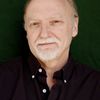For the past several days here, and for more to come, I am counting down the days to the atomic bombing of Japan (August 6 and August 9, 1945), marking events from the same day in 1945. I've written hundreds of article and three books on the subject: Hiroshima in America (with Robert Jay Lifton), Atomic Cover-Up (on the decades-long suppression of shocking film shot in the atomic cities by the U.S. military) and Hollywood Bomb (the wild story of how an MGM 1947 drama was censored by the military and Truman himself).
August 4, 1945:
--On Tinian, Little Boy is ready to go, awaiting word on weather, with General LeMay to make the call. With the weather clearing near Hiroshima, still the primary target, taking off the night of August 5 appears the most likely scenario. Secretary of War Stimson writes of a "troubled" day due to the uncertain weather, adding: "The S-1 operation was postponed from Friday night [August 3] until Saturday night and then again Saturday night until Sunday."
--Hiroshima remains the primary target, with Kokura #2 and Nagasaki third.
--Paul Tibbets, pilot of the lead plane, the Enola Gay, finally briefs others in the 509th Composite Group who will take part in the mission at 3 pm. Military police seal the building. Tibbets reveals that they will drop immensely powerful bombs, but the nature of the weapons are not revealed, only that it is "something new in the history of warfare." When weaponeer Deke Parsons says, "We think it will knock out almost everything within a three-mile radius," the audience gasps.
Then he tries to show a film clip of the recent Trinity test--but the projector starts shredding the film. Parsons adds, "No one knows exactly what will happen when the bomb is dropped from the air," and he distributes welder's glasses for the men to wear. But he does not relate any warnings about radioactivity or order them not to fly through the mushroom cloud.
--On board the ship Augusta steaming home for the USA after the Potsdam meeting, President Truman relaxes and plays poker with one of the bomb drop's biggest booster, Secretary of State Jimmy Byrnes. Truman's order to use the bomb had simply stated that it could be used any time after August 1 so he had nothing to do but watch and wait. The order included the directive to use a second bomb, as well, without a built-in pause to gauge the results of the first and the Japanese response--even though the Japanese were expected, by Truman and others, to push surrender feelers, even without the bomb, with Russia's entry into the war on August 7.
Greg Mitchell, former editor of Nuclear Times and Editor & Publisher, is the author of more than a dozen books, with three on the use of the bomb, including Atomic Cover-Up (on the decades-long suppression of shocking film shot in the atomic cities by the U.S. military) and Hollywood Bomb (the wild story of how an MGM 1947 drama was censored by the military and Truman himself).
